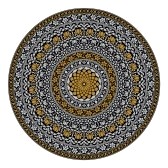 |
American Literature: Romanticism final exam assignment Sample Final Exams 2013 mid-length essay |
 |
Hannah Wells
Mid-Length Essay:
Reflections of an Anglophile
This semester, I began to let go of the rigid,
block-like picture in my head that represented Romanticism, Realism and
Modernism. Admittedly, this change did not come easily, and involved some mental
kicking and screaming. I have always viewed Romanticism as an historical era
that took place during the years between 1798 and 1832 and, as is evident by
these years, my definition of Romanticism is (shamefully) British. Although I
was familiar with many American authors and their works, and have even taught
American Romanticism, this course was necessary for the expansion of my mind and
the genre itself. My teacher brain can now expand beyond teachable materials and
encourage students to look for the influences of Romanticism across the decades.
As I mentioned in my research project, I find the
teaching of literary-historical periods to be very helpful. The characteristics
of an era make for an easy checklist for students and provide topics for
intelligent paragraphs as they analyze a piece. English and history departments
can effectively teach the same era simultaneously and really work through the
changing face of our nation. I have been lucky enough to teach Jazz Age
literature while my friend the history teacher passionately discussed America in
the 1920ís. Although I absolutely see the connections, it will be challenging to
show students how the style of older eras is still present in the next time
period. Itís hard enough to teach the tenets of Romanticism to teenagers, let
alone tell them to remember those and memorize the characteristics of Realism.
Nevertheless, the realization that old pieces affect new pieces can only produce
better, more thorough, more mature analysis, and that is my mission in life!
This course was most valuable
for the new texts that I hadnít read and will surely pass on. I would love to
teach portions of
The Last of the Mohicans
because of its clearly Romantic style and the lovely American landscape that
isnít widely taught. I loved the Jewett pieces and the Porter story that I
wasnít familiar with. These pieces are essential examples of the writers who
combined new and old forms. I also think the combination of modern poetry with
older works was helpful, especially since the high school textbooks donít get
that far or, more likely, a standardized test takes away most of the spring and
we run out of time. This strategy showed me that I could pull in a much later
piece at any time to show students how Romanticism lives on.
My midterm and research project both centered on the
fantastic part of Romanticism. Our extensive work on the gothic and sublime in
class, along with my continued study of the fantastic, are significant
developments in my learning. Students love dark pieces, they love it when I tell
them they are all sick because they get a kick out of ďMurders in the Rue
Morgue.Ē More importantly, studying the gothic and sublime requires close
examination of language and images and, again, makes for mature analysis. As I
mentioned in my research project, I think any extra, close, textual work that
can be done with popular authors like Poe is very valuable. The fantastic genre,
the language of the sublime and gothic images (all things that leap out at me
now) are important bits that students can look for not only in Romantic pieces,
but in the works of Faulkner, Fitzgerald and beyond.
Lastly, this semester I learned the value of
re-reading. The brain has amazing recall power when itís seen something more
than once. I found this really helpful and I feel like I know some important
works intimately, which of course makes me a better teacher. As much as I
enjoyed this course, Iím afraid that my heart still belongs to British lit.
However, I will certainly continue to work on breaking down the walls of my
beloved, rigid era system in favor of looking for past styles in the new.
|
|
|
|


